CITY OF TORONTO ARCHIVE
No. 14230. Curtiss 56 Thrush J (NC7568 c/n G-1)
Photographed at Leaside Aerodrome, Leaside, East York, Toronto, Ontario, Canada, October 5, 1929
Archive No. F1266-IT18307
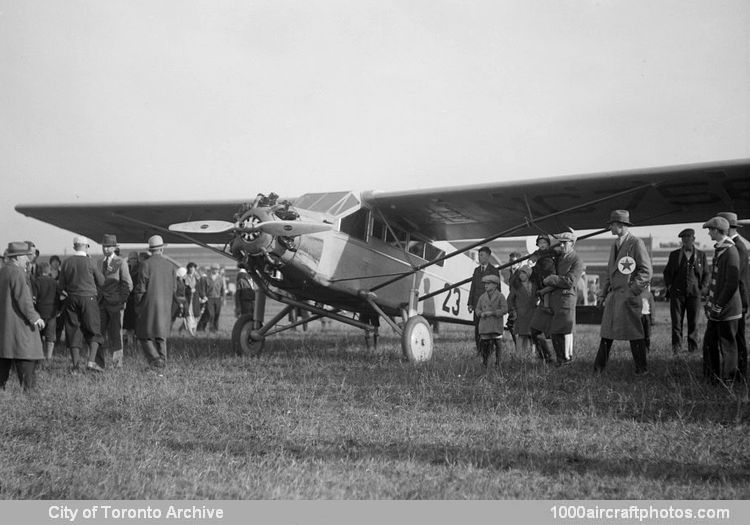
12/31/2023. Remarks by
Johan Visschedijk: "The Curtiss 56 Thrush J NC7568 participated in the Fifth National Air Tour, and is pictured on top of the page at the Leaside Aerodrome, at that time on the outskirts of Toronto, after the second lap and the first day of the tour. (Notice the large badge on the coat of the Texaco representative.)
The Thrush was essentially a six-seat enlargement of the Robin, hence it was sometimes called the Big Robin. Three prototypes, fitted with an 180 hp Challenger R-600 Challenger two-row six-cylinder air-cooled radial engine, were built, like the Robin, at Curtiss, Garden City, Long Island, before production was started in St Louis, Missouri. The Thrush was built in two versions, with a total of thirteen.
56 Challenger Thrush. Fuselage construction of the Thrush differed from the Robin in using mostly riveted aluminum tubing instead of welded steel. Awarded Aircraft Type Certificate 159 in June 1929, the Challenger model was somewhat underpowered. Extensive cowling tests were made in an effort to improve the front-end streamlining and improve performance. The third prototype, with minor refinements, received ATC 160 at the same time.
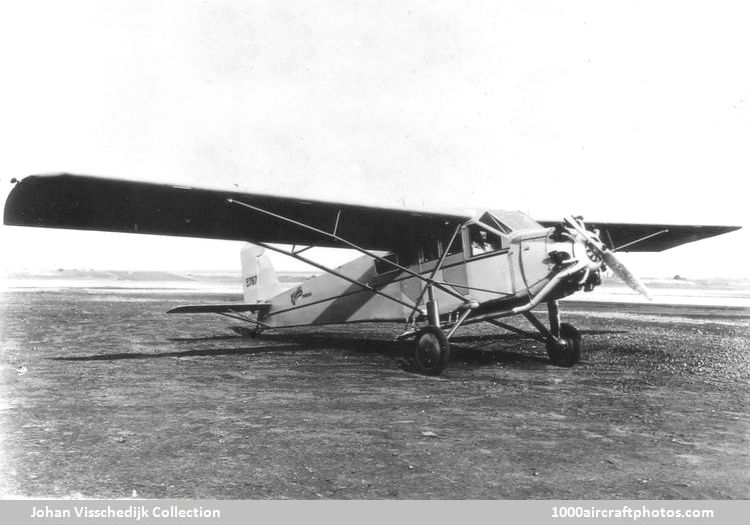
56 Challenger Thrush (NC9787) (
Johan Visschedijk Collection) APS No. 1854
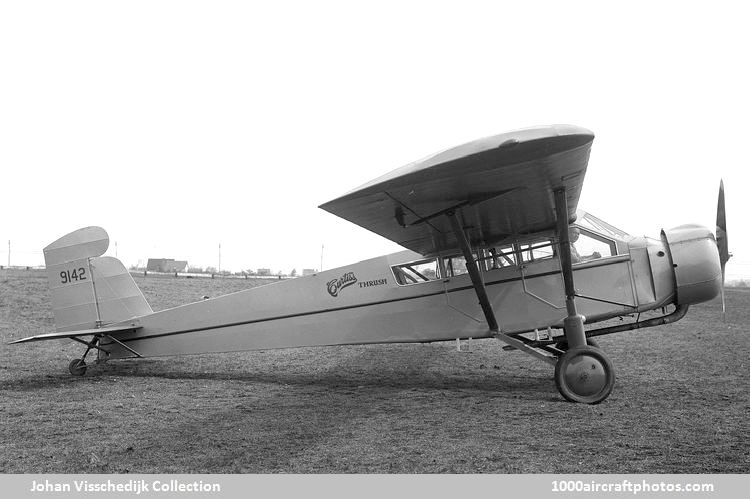
56 Challenger Thrush (NC9142) (
Johan Visschedijk Collection)
All three prototypes (NC7568, NC9787, NC9142, c/n G-1 to G-3) were converted to higher-powered J-models.
56 Thrush J. The first two Thrush prototypes were converted to the J-model with 225 hp Wright J-6-7 Whirlwind seven-cylinder air-cooled radial engines and received ATC 236 in September 1929. Under ATC 261, awarded in October, ten production Thrush Js were built at St Louis:
Even with the larger engine, the Thrush J was underpowered since its principal competition, the
Ryan Brougham and the
Travel Air 6000 had both gone to 420 hp by this time. The major shortcoming of the Thrush J, however, was poor timing; its market vanished with the onset of the depression.
56 Thrush J Special. One J-model, NC553N c/n 1005, was converted to J-Special under Memo Approval 2-210 by installation of a 240 hp J-6-7 engine in May 1930.
The following data is related to the Thrush J.
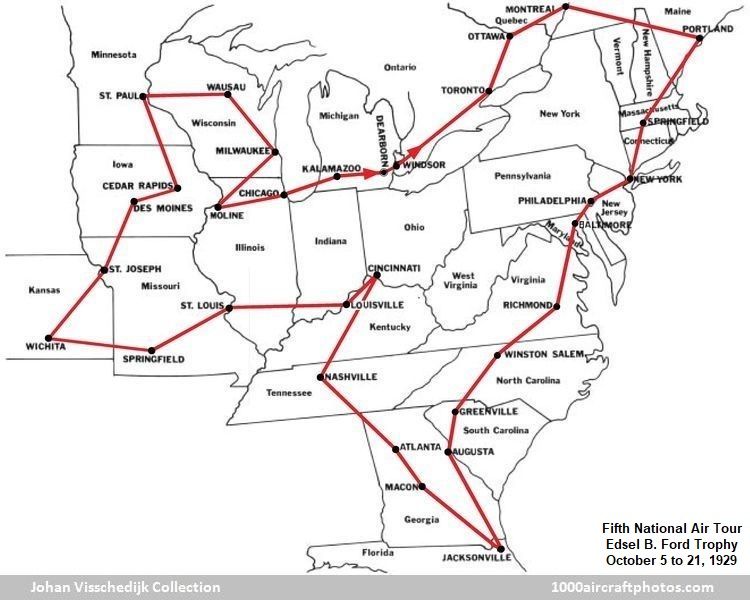
Properly named "The National Air Tour for the Edsel B. Ford Reliability Trophy" (also referred to as "The Ford Reliability Tour") these tours were intended to demonstrate to the public the reliability of air travel, as well to encourage the development of aircraft and landing facilities in common. In all seven tours were held between 1925 and 1931, starting and ending took place at Ford Airport at Dearborn, Detroit, Michigan.
The fifth tour was held from Saturday October 5 to Monday October 21, 1929, although Sunday the 15th was a non-flying day. During the sixteen flying days the 29 participating aircraft flew 32 laps (with two laps every day), landed in twenty states and two Canadian provinces, with a total distance of 5,017 mls (8,074 km). The NC7568, wearing the tour entry number "23" and flown by Dale G. Jackson, accompanied by Paul Handlover, ended as twelfth.
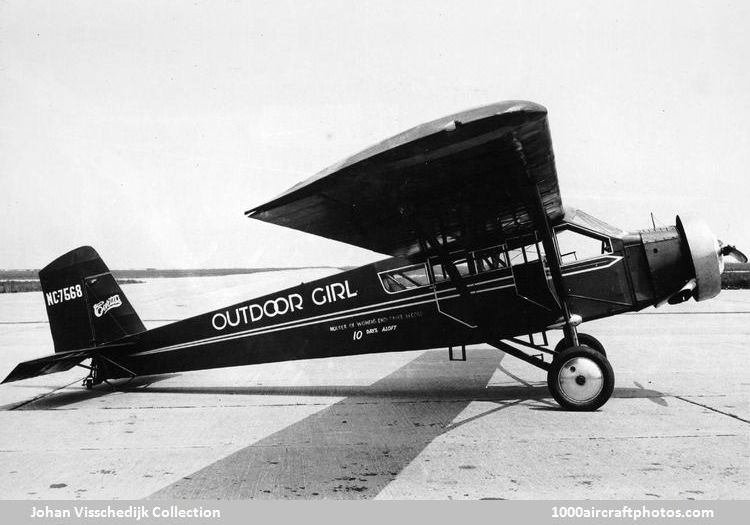
56 Challenger Thrush J (NC7568) (
Johan Visschedijk Collection)
Almost four years after the October 1929 tour, NC7568 was used in a world endurance record flight attempt. Two female endurance pilots, Frances Harrell Marsalis and Helen Richey, both 24 years of age, flew the aircraft for 237 hours and 42 minutes (nine days, 21 hours and 42 minutes over Miami, Florida, between December 20 and 30, 1933. The aircraft was named Outdoor Girl, after a cosmetic product manufactured by the sponsor of the record attempt. The aircraft was numerous times refueled in the air by a Curtiss Robin.
A year later, December 31, 1934, Helen Richey became the first female pilot for a regularly scheduled airline, flying a Ford Tri-motor of Central Airlines (of Greensburg, Pennsylvania) from Washington, D.C. to Detroit. By that flight she also became the first official female pilot flying U.S. Mail.
In June 1940, the aircraft NC7568 was exported to Venezuela, where it was registered to Ernesto Blanco Uribe as YV-EBU.
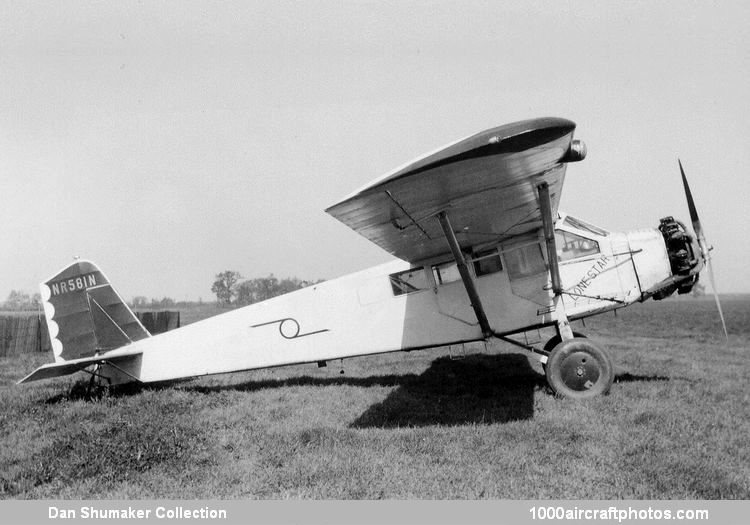
56 Challenger Thrush J (NR581N) (
Dan Shumaker Collection)
In August 1934, during the Chicago World's Fair, another Thrush J, registered NR581N (c/n 1009) and named Lone Star, was used by Jean La Rene and Mary Elizabeth Owens in five attempts to beat the above stated world endurance record flight of 1933. Flying from Curtiss-Reynolds Airport at Glenview, Illinois, it was refueled twice a day in midair.
Between November 30 and December 8, 1934, Jean La Rene made another attempt to capture the record, this time accompanied by Henrietta Sumner. The aircraft was again the Thrush J NR581N, location was Oklahoma City. Unfortunately engine problems forced the flight to end after 198 hours and 13 minutes."
Created December 31, 2023





